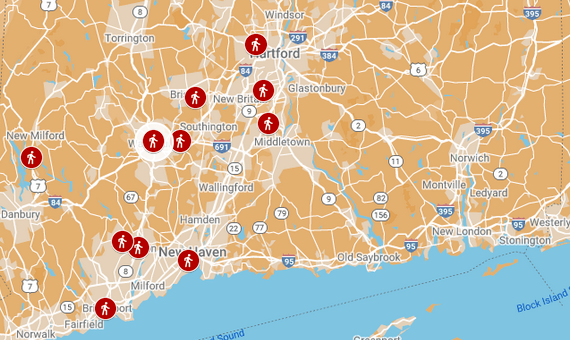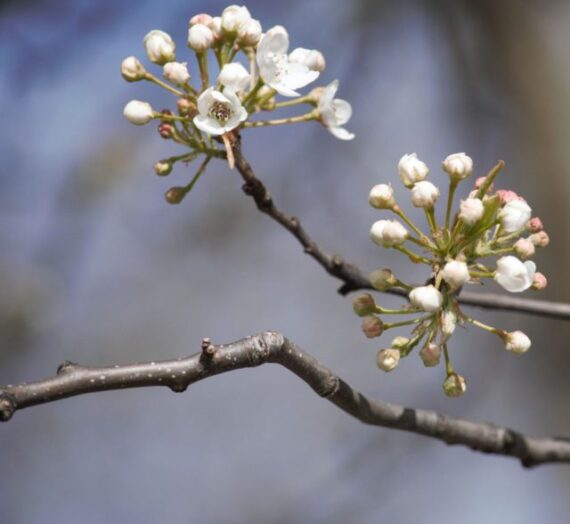
The 49th Annual Greater Hartford West Indian Day Parade tried out a different route Saturday afternoon.

While some were upset about this change, for reasons vaguely related to vendors, others liked this approach, feeling that it is more inclusive, as the local West Indian community does not entirely live or work in just two neighborhoods of Hartford. Some were excited about how easy it was to find parking in Downtown, just steps from where they set up their chairs for the parade. Others have said the decision to change the route is mainly financial– its costs less (for security) to bring the parade into downtown than to keep it in the neighborhoods.
 None of these conversations are new.
None of these conversations are new.
Having the Independence celebration near the Carnival-inspired festival has been somewhat controversial, and others have viewed the West Indian Social Club as having too much of a voice about what goes on. Flashing back almost a decade, a report notes this, with interviewees implying that the club would like all of the action to remain nearby; one person was quoted as saying that keeping the parade contained in the neighborhoods essentially hides her culture. As she says, her community includes Downtown.
Nearly ten years later, this discussion is still happening. To call this a debate of change versus tradition is to oversimplify the situation. When a route has already changed several times in direction, start/end locations, and length, it is hard to say what the tradition is anymore.
 Some years, the parade began at Main and Battles Streets, ending near the Windsor town line, though it has started in Bushnell Park and wrapped up by the West Indian Social Club. Other years, the route was shortened. This year, it kicked off at Main and Battles Streets, but headed south, ending in Bushnell Park.
Some years, the parade began at Main and Battles Streets, ending near the Windsor town line, though it has started in Bushnell Park and wrapped up by the West Indian Social Club. Other years, the route was shortened. This year, it kicked off at Main and Battles Streets, but headed south, ending in Bushnell Park.

It’s an exaggeration to state that the event has been moved to Downtown. About half of the route is in Downtown; half of the route is in the Clay Arsenal and North East neighborhoods. If anything, this is a compromise that allows for less expensive security and opens up the parade to those who live in/near Downtown.
The violence at the 2008 parade — an anomaly, as the event has not experienced deadly violence at any other time in its long history — is thought to have put a damper on attendance in recent years; however, reports show that it had lost some of its allure previous to that incident. While turnout this year was nothing to be ashamed of, a few snares might keep people away in the future.
For one, there were conflicting reports of when the parade was to begin. An event listing with the mainstream media stated the parade would step off at 10am. A press release sent from the City of Hartford said it’d begin at noon. A number of parade-goers thought it was starting at 1pm. In any case, it was late– nearing 3pm by the time the parade reached the edge of Bushnell Park. Children were growing impatient. Many had postponed lunch, and then, unsure of when the event would actually begin, delayed longer to avoid missing the parade while fetching food. As one woman waiting for the parade said, “this is unacceptable. This wait is simply unacceptable.”
Another turnoff for some was the overwhelming police presence. A man on his cellphone told the caller, “there are police every three feet.”
Once the parade arrived, people relaxed.
Veteran parade-goers noticed that this year’s event seemed to have a heavy concentration of politicians. The first ones through were the endorsed candidates; a separate crew, with their respective entourages, could be categorized as the rogue candidates. Ashley (A.J.) Johnson‘s cheers — such as asking people to yell if they love Hartford — got the crowd excited and even dancing. This was an accomplishment, given the exhaustion some were feeling after hours of parade anticipation.
Besides politicians, there were dancers, drill teams, drummers, a stilts walker, and a unicyclist.
The Greater Hartford West Indian Parade — described by The Hartford Guardian as “the oldest parade of its kind in North America” — began as a way to celebrate Jamaica’s, as well as Trinidad and Tobago’s, independence from Great Britain. It has since become mainly a celebration of Caribbean cultures.
The parade’s Grand Marshall was Dr. Neil Parsan — the Ambassador of Trinidad and Tobago.
A festival in Bushnell Park followed the parade.
Vendors sold clothing, hats, bags, and more. Smoke from jerk pits rose above Trinity Street, which was closed to traffic to allow for a row of food vendors.




Real Hartford » Today: West Indian Day Parade
[…] Click here to see photos from the event. […]
Bunnybee
$5 for Ting?!
Kerri Provost
No price listed for oxtail or curried chicken.
Bunnybee
If a bottle of Ting was $5, I can only imagine how expensive the oxtail would have been!
Glenn
This parade was responsible for me missing two of the best musical performers of our time. Routes and detours should be advertised as much as the parade.
Kerri Provost
In the weeks leading up to the parade, there were a number of news articles discussing the route.